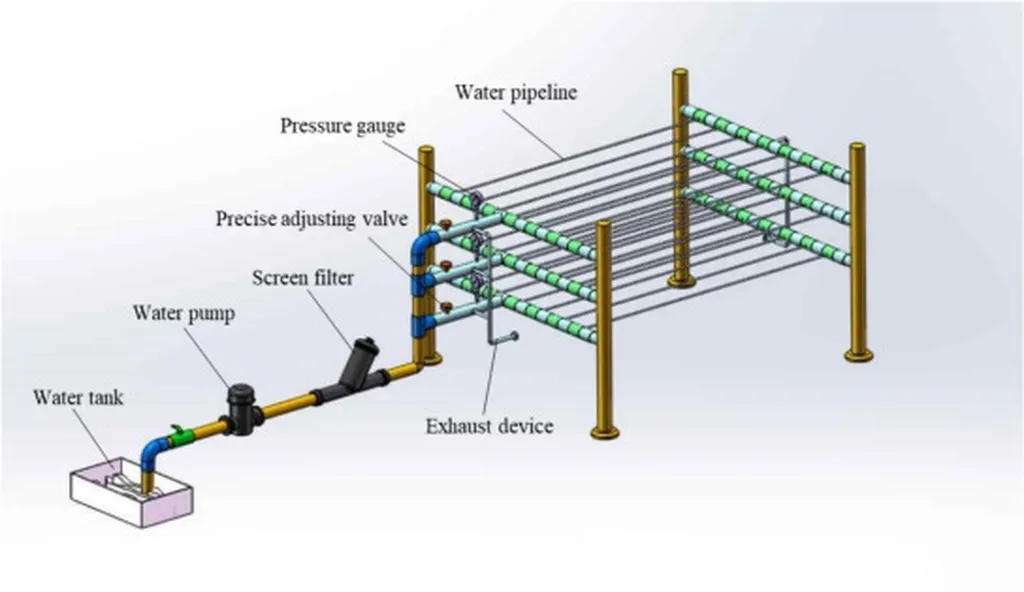In the arid expanses where water scarcity is a constant challenge, farmers and agritech innovators are turning to brackish water for drip irrigation. However, a persistent issue has been clogging of emitters, which can render this life-giving technology ineffective. A recent study published in the journal *Agricultural Water Management* (translated from Chinese as “Agricultural Water Management”) offers a promising solution, focusing on the role of manganese (Mn) and copper (Cu) in mitigating this problem.
The research, led by Peng Hou of the State Key Laboratory of Efficient Utilization of Agricultural Water Resources at China Agricultural University and the School of Water Conservancy and Transportation at Zhengzhou University, delves into the intricate dance of ions in water and their impact on emitter clogging. Hou and his team explored the effects of varying concentrations of manganese ions (Mn2+) and copper ions (Cu2+) on the clogging of emitters in brackish water drip irrigation systems.
The findings are nuanced and reveal a delicate balance. As the concentrations of Mn2+ and Cu2+ increased, the dry weight of emitter clogging substances initially rose and then fell. “This indicates that there is an optimal range for these ions to effectively control emitter clogging,” Hou explained. For Mn2+, concentrations between 1.5 and 3.0 mg/L were found to mitigate clogging, while lower concentrations exacerbated it. This is because higher Mn2+ concentrations reduced the formation of clogging substances like quartz, muscovite, and chlorite.
Conversely, Cu2+ concentrations of 0–0.3 mg/L reduced the fouling accumulation process, with the best results observed at 0.3 mg/L. “Cu2+ reduces the formation of substances like quartz and calcite, which are major contributors to clogging,” Hou noted. The study recommends maintaining Mn2+ concentrations above 2.0 mg/L and Cu2+ concentrations no less than 0.15 mg/L in drip irrigation systems.
The implications for the agricultural sector are significant. Emitter clogging is a major barrier to the widespread adoption of drip irrigation, particularly in arid regions where brackish water is a viable alternative. By optimizing the concentrations of Mn2+ and Cu2+, farmers can enhance the efficiency and longevity of their irrigation systems, leading to more sustainable water use and improved crop yields.
This research not only provides practical guidance for emitter clogging control but also contributes to the broader goal of sustainable water resource management. As the world grapples with increasing water scarcity, innovations like these are crucial. They offer a glimpse into a future where technology and science converge to address some of agriculture’s most pressing challenges.
The study’s findings were published in the journal *Agricultural Water Management*, a testament to the growing body of research dedicated to improving water use efficiency in agriculture. As Hou and his colleagues continue to explore the complexities of water chemistry and its impact on irrigation systems, the agricultural community stands to benefit from their insights and innovations.

